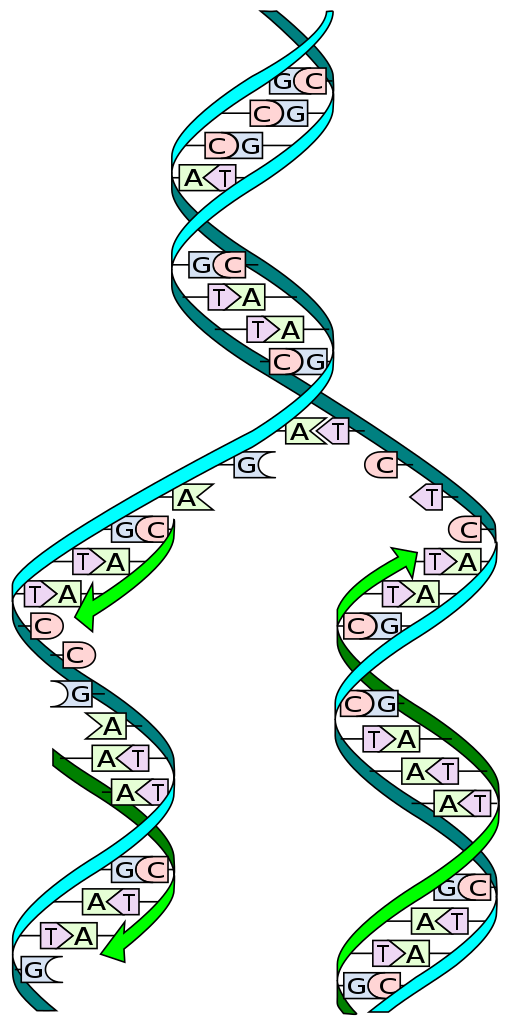The cell cycle encompasses the whole life of a cell from birth through to its death. It includes the formation of a cell from its parent cell until its division into its daughter cells. An important part of the cell cycle is cell division. During cell division, a cell replicates to form either two daughter cells, through mitosis (asexual reproduction); or four daughter cells, through meiosis (sexual reproduction). However, this division forms only a small part of the cell cycle. In this post, we’ll review the cell division and dive into the importance of the S phase.
What We Review
Phases of The Cell Cycle
The cell cycle in eukaryotes is commonly broken down into two main phases. The cycle first begins when mitosis or meiosis produces a daughter cell. This cell enters into interphase, a long stage accounting for about 90% of the cell cycle. Following interphase, the cell enters mitosis or meiosis. This then leads to cell division (cytokinesis) and the beginning of a new cell cycle in each of the daughter cells.
Mitotic Cell Cycle
In mitosis, interphase further splits into three sub-phases. The first is known as { G }_{ 1 }, for first gap or first growth. The second is the S phase, for synthesis. Lastly, the third is known as { G }_{ 2 }, for second gap or second growth. During the two G phases, cell growth, protein synthesis,and enzyme synthesis are occurring. Meanwhile, during the S phase, DNA is replicated. DNA replication occurs without increasing the chromosome number. In this way, there is enough DNA in the cell for two daughter cells, maintaining the same ploidy (number of chromosomal sets) as the parent cell. Don’t get confused between DNA replication and chromosome replication. Chromosome replication will lead to a change in ploidy whereas DNA replication will not.

Meiotic Cell Cycle
In meiosis, the cell cycle is slightly more complicated. Just as meiosis can be split into meiosis I and meiosis II, so can interphase. Interphase I precedes meiosis I and consists of G and S phases. After meiosis I is complete, interphase II occurs, with only a G phase. Following this, meiosis II occurs. The two G phases are essential for cell growth and protein synthesis. The S phase is responsible for DNA replication. After meiosis I, DNA replication does not need to occur, as replication has already occurred before meiosis I. This is why interphase II does not include an S phase.

Checkpoints in the Cell Cycle
There are several points in the cell cycle to trigger and coordinate certain events. These include a { G }_{ 1 }checkpoint, a { G }_{ 2 } checkpoint, and an M checkpoint, as well as the ability to switch to a nondividing { G }_{ 0 } phase is a signal is not given. This comes in handy in organisms where cells get worn out and need to be replaced continuously (this is how we grow and eventually age). During growth, new cells help account for the increased body size (both weight and height).
Numerous events occur at each checkpoint. At the end of the second growth phase, quality control occurs. The cell checks that the mass has doubled, DNA replication has concluded, and the DNA is not damaged. This point is called a mitotic control point. Just before the cell exits the M phase another quality control takes place. Here chromosome alignment is checked, and the spindle attachment to all the chromosomes is checked. Before cells enter the S phase of interphase they go through the START or Restriction point; this is where the nutritional status of the cell is checked and, most importantly, DNA is checked again for damage. If you have been paying attention, you may have noticed that the integrity of DNA has already been checked once at the mitotic control point, this is because DNA integrity is arguably the most important thing in the cell.
The S Phase of Interphase
The S phase of a cell cycle occurs during interphase, before mitosis or meiosis, and is responsible for the synthesis or replication of DNA. In this way, the genetic material of a cell is doubled before it enters mitosis or meiosis, allowing there to be enough DNA to be split into daughter cells. The S phase only begins when the cell has passed the { G }_{ 1 } checkpoint and has grown enough to contain double the DNA. S phase is halted by a protein called p16 until this happens.
The p16 protein is vital in suppressing tumors and is responsible for preventing some cancers from happening. It counteracts the activities of cyclin-dependent kinase proteins which are responsible for signaling when the cell is ready to go through to the next phase. The kinases signal this by phosphorylating retinoblastoma protein (pRB) which when active tells the cell to move on to the next phase.
The most important event occurring in S phase is the replication of DNA. The aim of this process is to produce double the amount of DNA, providing the basis for the chromosome sets of the daughter cells. DNA replication begins at a point where regulatory pre-replication complexes are attached to the DNA in the { G }_{ 1 }phase. These complexes act as a signal for where DNA replication should start. They are removed in the S phase before replication begins so that DNA replication doesn’t occur more than once.
In addition to DNA replication, cell growth continues to occur through the S phase. Proteins and enzymes necessary for DNA synthesis continue to be produced.
DNA Synthesis
The DNA molecule is in the form of a double helix. During S phase, an enzyme called helicase unwinds the DNA strand, in the same way that you would unzip a zipper. The two single DNA strands can then be used as templates to form two identical double DNA strands.
An enzyme called DNA polymerase then binds nucleotides to each of the single template DNA strands using the complementary base pairing rule: adenine binds to thymine, and cytosine binds to guanine. In this way, a new double helix of DNA is formed that is identical to the original.
Figure 3: DNA synthesis occurring during the S phase.
After all the DNA has been unzipped and synthesized into two new DNA strands, the cell moves from this phase into the { G }_{ 1 } phase of mitosis, or prophase I of meiosis.
Why the S Phase Is Important
DNA synthesis must occur rapidly, as the unpaired base pairs of the DNA strand during replication are vulnerable to harmful mutagens, which can lead to genetic abnormalities, cell disease, or even cell death. This phase is highly regulated, due to its importance in the conservation of genetic material. If there is any damage to the DNA in a cell, it can be identified and fixed in the S phase.
Besides DNA replication, the numerous controls involved in ensuring the smooth running of the show are crucial in ensuring that the cell does not spend more time than is necessary for this phase. Any delays can have a cascade effect on growth rates and cell replacement, and this would have adverse implications for the organism as a whole.
Biology Review
In conclusion, the cell cycle is responsible for forming new cells, until the point where it divides into daughter cells. This includes mitosis or meiosis, and interphase. In a mitotic cycle, interphase is split into a first gap phase ({ G }_{ 1 }), a synthesis phase (S), and a second gap phase ({ G }_{ 2 }). During { G }_{ 1 } and { G }_{ 2 } the cell grows, and proteins and enzymes are synthesized. During the S phase, DNA is synthesized in the process of DNA replication. In the meiotic cycle, interphase is split into interphase I and interphase II. Interphase I includes a gap phase (G) and a synthesis phase (S), while interphase II includes only a gap phase (G).
The S phase is regulated by regulatory pre-replication complexes, which signal where DNA synthesis should begin; protein p16 and its associated partners, which inhibit the cell from entering S phase until it is large enough; and regulatory pathways during DNA replication. Errors in this phase can lead to genetic abnormalities, disease, or cell death (unplanned cell deaths, not to be confused with apoptosis). The S phase is also important for the detection and correction of DNA damage.
Looking for Biology practice?
Check out our other articles on Biology.
You can also find thousands of practice questions on Albert.io. Albert.io lets you customize your learning experience to target the practice where you need the most help. We’ll give you challenging practice questions to help you achieve mastery in Biology.
Start practicing here.
Are you a teacher or administrator interested in boosting Biology student outcomes?
Learn more about our school licenses here.









